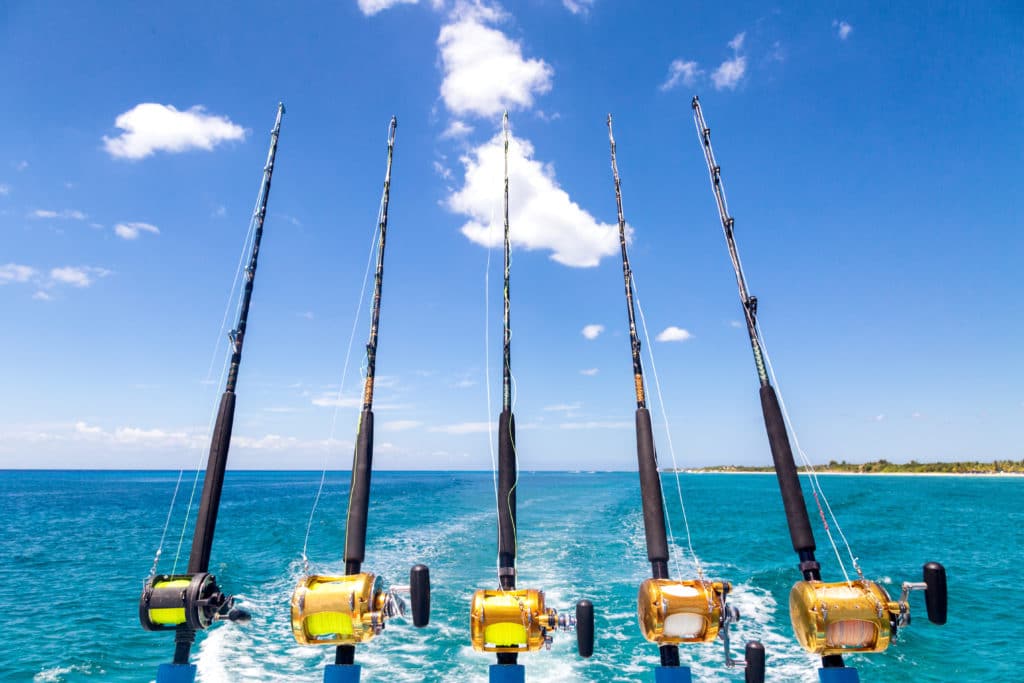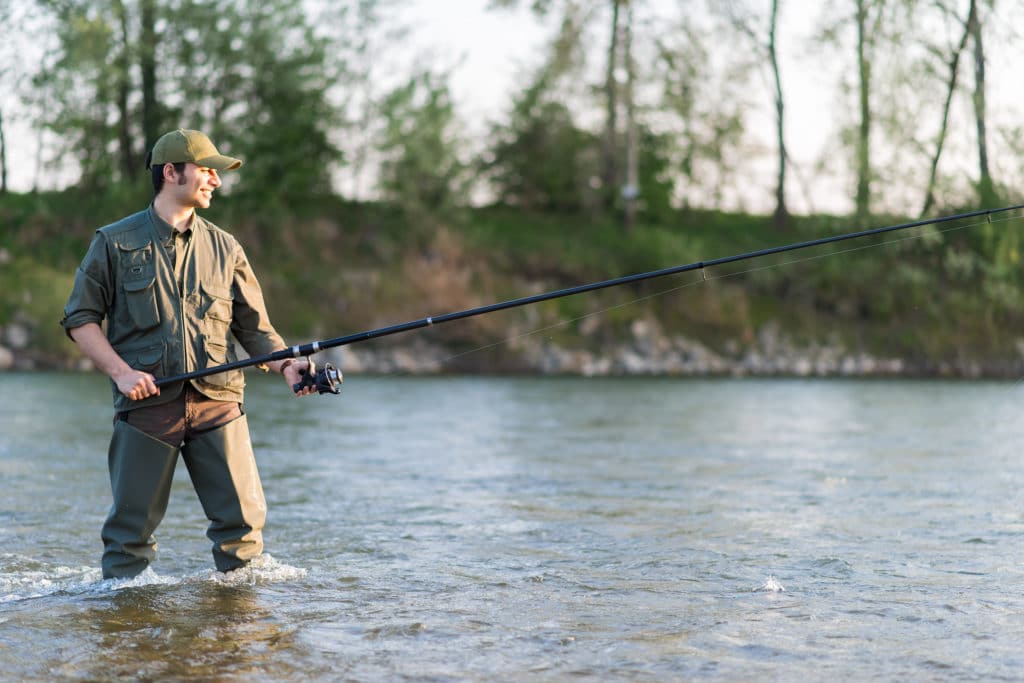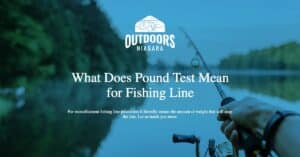People new to fishing are usually confused by the different types of fishing rods available.
Apart from the hassle of choosing from the different fishing rod types, you have to choose the proper fishing rod weight rating to suit your purpose.
The fact that line rating isn’t perfect science is another cause for confusion.
These ratings vary from manufacturer to manufacturer.
Let’s take a look at what line ratings mean.

Contents
What is Line Rating?
Every fishing rod has a rating on the rod’s butt, which states the line weight and the lure weight.
The line rating indicates the line’s breaking strength that can be used with a properly adjusted reel.
The line rating doesn’t indicate the weight of fish you can use the line with.
Many people take these numbers as the limits of the rod, but they are not.
The line weight is usually stated on the blank either in pounds, kilograms, or PE rating.
Typically, the mono rating is given, which means that the desired line diameter is based on the monofilament line diameter.
Anglers working with braided lines that have a smaller diameter than monofilament lines will have to increase the strength of the line to achieve the same results.
The line and lure rating of a fishing pole usually corresponds with the “power” of the rod.
Some rod types do not indicate line ratings but instead, depend on the power ratings to tell an angler the type of line that they should use.
The “power” of a rod varies with different rod types. Using a line that corresponds with the “power” of a rod is essential.
A line that is too light for a rod will most likely break on a fish, while using a heavy line on a light rod will probably break the rod.
The fishing line weight has to agree with the rod’s power.

Main Power Ratings
Ultra-light. These rods are usually used for crappie, trout, and other small fish. They will not quickly move a larger fish and are not suited for larger fish.
Light. Light power will facilitate a light lure for trout, bass, steelhead, and panfish. Most times, these rods are species-specific.
Medium-light. These are rods between light and medium. The medium-light power is standard for smallmouth bass rods and steelhead rods. However, many manufacturers skip this power rating.
Medium. Medium power works well with standard lures, typically for walleye and bass. Although heavy for trout, medium power rods are the most common steelhead rods. They are great for smallmouth and largemouth bass and can be used for smaller species of salmon.
Medium-heavy. This is great for handling larger fish while maintaining good action.
Heavy. Heavy power rods can handle heavy lures and rigs for big fish. They are meant for fishing larger fish and are designed to pull them effectively.
Extra heavy. This is meant for ultimate power and is a heavy-action rod. Extra-heavy power rating is meant for big fish and big presentations.
Lure Rating
The lure weight rating describes the ideal lure weight for loading the rod on the cast.
Getting the right lure weight is one of the biggest problems anglers face because any rod will cast best with a specific lure weight, not a range of weight.
A lure that is too light will not allow the rod to load correctly, resulting in a shorter cast.
Using a too heavy lure will cause the rod to load too much, resulting in a slow cast.
When you have a lure of the right weight, the rod will load correctly and achieve optimal cast.
What do the numbers on a fishing rod mean?
Most fishing rods have a set of letters and numbers written on them and are usually written beside the handle.
The numbers indicate the type and length of the rod. They also note the breaking strain of the line to be used and the lure size or bait you can use with the rod.
A good fishing rod has three sets of letters and numbers. The first set refers to the type of rod, its length, weight, and the number of pieces.
For example, C662M on a rod would mean the rod is a casting rod (C is for casting rods and S is for spinning rods) 6’6″ long, is in two pieces, and has medium power.
The second set of numbers describes the line. They indicate the ideal fishing line weight for the rod and are usually given for monofilament lines.
The third set of numbers refers to the recommended lure weight.
With the understanding of these numbers, an angler can choose the ideal lure size and line strength to use with a rod.
Should you use a line lighter than what is stated on the fishing pole?
Using a lighter line requires more skill and makes for more of a fight. However, it has its benefits.
A lighter line casts further and reduces the chances of your pole breaking.
Thinner lines also have less visibility, making it harder for fish to see them.
Using a lighter line with a strong rod is a bad idea, as it will result in the line snapping.
When pairing a lighter line with a heavier rod, check its power and ensure it’s not too high.
It is essential that the power rating is either in line with or very close to the line rating.
Using a line that is too light can also cause you to lack sensitivity.
This means you will not easily sense bites.
A line that is too light will also affect your casting distance.
Final Thoughts
The line ratings written on a rod are meant to serve as a guide to help you make sure you don’t exceed the line rating of the pole.
However, few people follow these recommendations.
Arming yourself with the knowledge you have about line rating, lure rating, and power rating will help you make better decisions when choosing a rod for your fishing situation.







